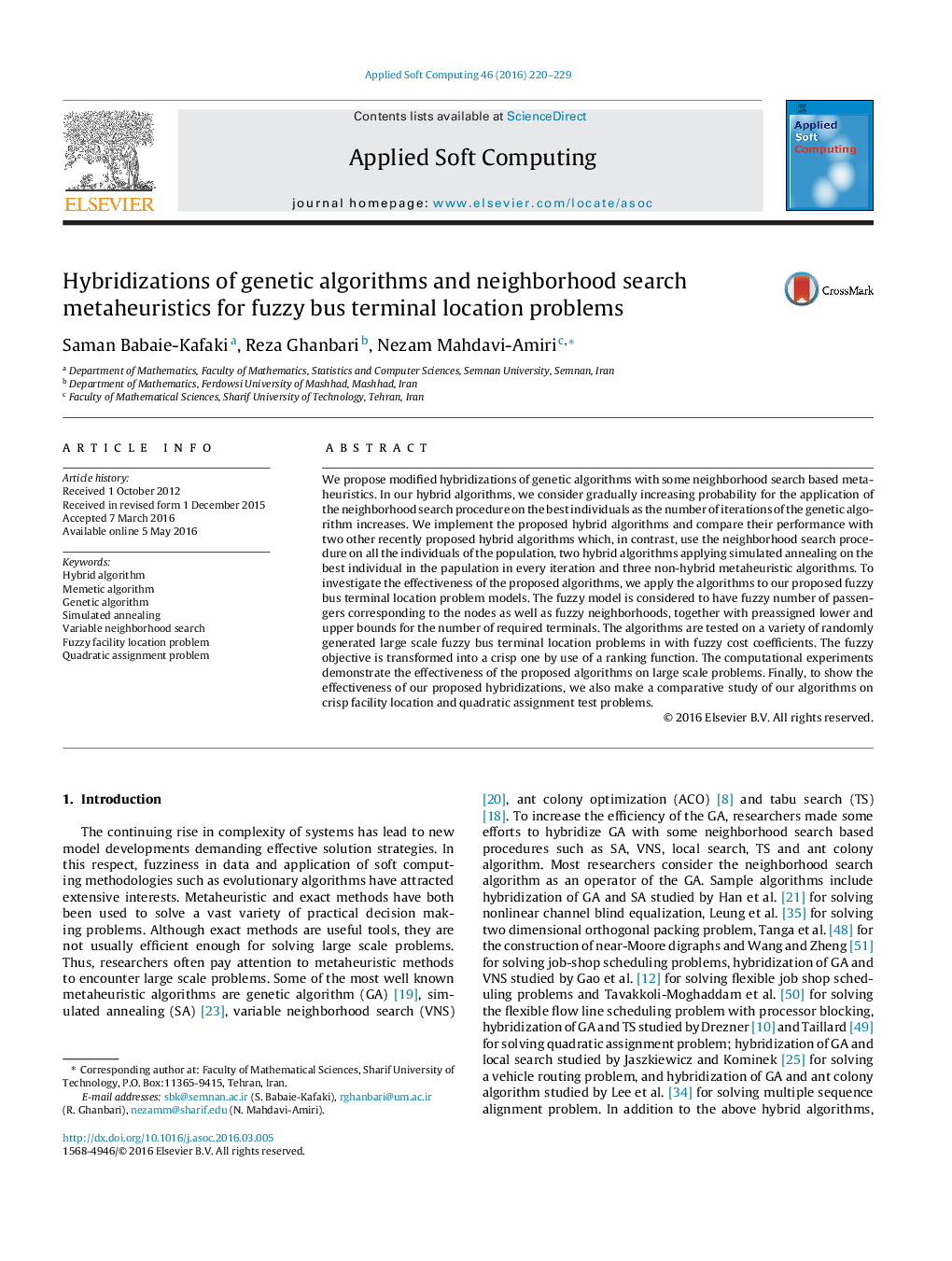| Article ID | Journal | Published Year | Pages | File Type |
|---|---|---|---|---|
| 494666 | Applied Soft Computing | 2016 | 10 Pages |
•Improvement of the mathematical model of a real-world problem (fuzzy bus terminal location problem).•Presentation of a modified hybrid genetic algorithms with some neighborhood search based metaheuristics.•Application of the algorithms to our proposed fuzzy bus terminal location problem models and testing the implementations of the algorithms on a variety of randomly generated large scale fuzzy bus terminal location.•A comparative study of our algorithms on crisp formulations of bus terminal location problem models to show the effectiveness of the algorithms for the proposed fuzzy models.•A comparative study of our algorithms applied to others optimization problems (simple plant location problem and quadratic assignment location problem).
We propose modified hybridizations of genetic algorithms with some neighborhood search based metaheuristics. In our hybrid algorithms, we consider gradually increasing probability for the application of the neighborhood search procedure on the best individuals as the number of iterations of the genetic algorithm increases. We implement the proposed hybrid algorithms and compare their performance with two other recently proposed hybrid algorithms which, in contrast, use the neighborhood search procedure on all the individuals of the population, two hybrid algorithms applying simulated annealing on the best individual in the papulation in every iteration and three non-hybrid metaheuristic algorithms. To investigate the effectiveness of the proposed algorithms, we apply the algorithms to our proposed fuzzy bus terminal location problem models. The fuzzy model is considered to have fuzzy number of passengers corresponding to the nodes as well as fuzzy neighborhoods, together with preassigned lower and upper bounds for the number of required terminals. The algorithms are tested on a variety of randomly generated large scale fuzzy bus terminal location problems in with fuzzy cost coefficients. The fuzzy objective is transformed into a crisp one by use of a ranking function. The computational experiments demonstrate the effectiveness of the proposed algorithms on large scale problems. Finally, to show the effectiveness of our proposed hybridizations, we also make a comparative study of our algorithms on crisp facility location and quadratic assignment test problems.
Graphical abstractGraphical abstract Figure optionsDownload full-size imageDownload as PowerPoint slide
